How to Cook a Proper Shrimp Boil
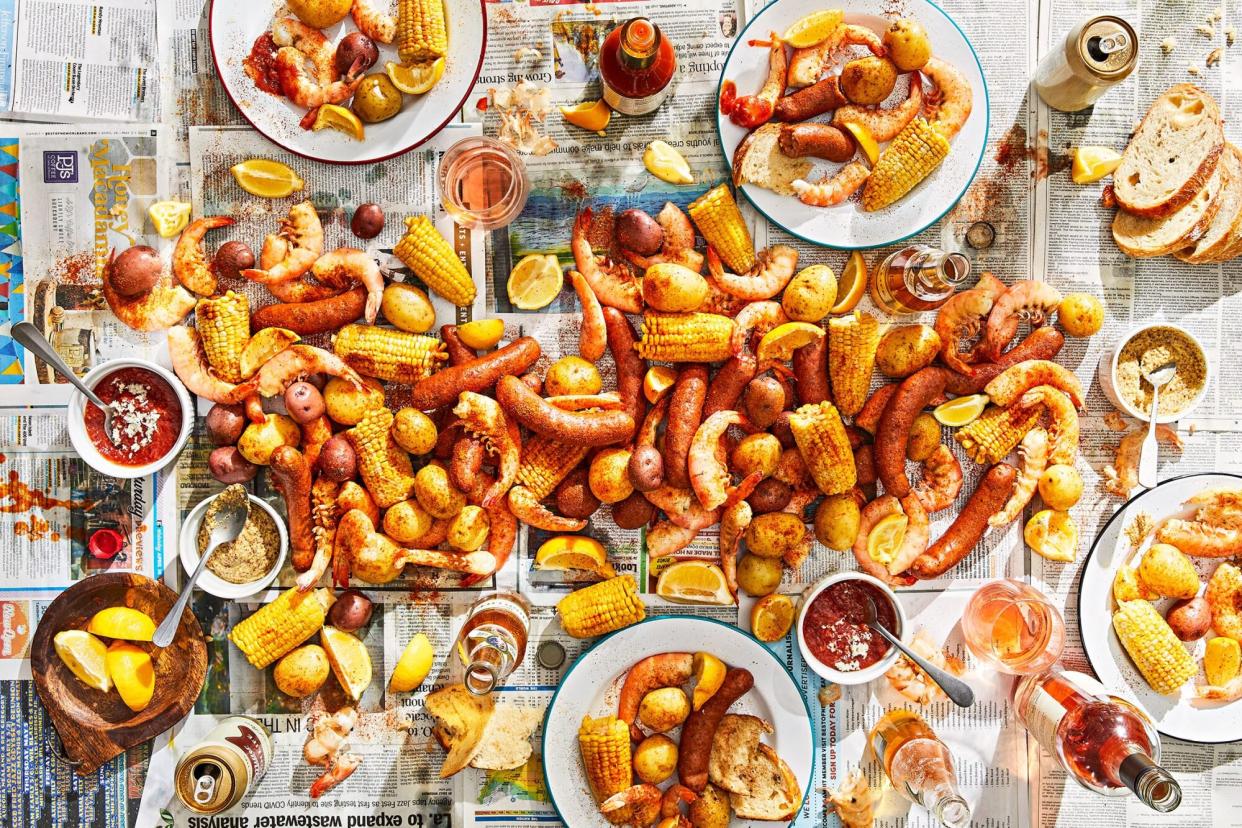
Photo by Christopher Testani / Food Styling by Margaret Monroe Dickey / Prop Styling by Mary Clayton Carl
Like "barbecue," "shrimp boil" is both a noun and a verb, a regional dish cooked in tall pots over propane flames from the mid-Atlantic region all the way down to the Gulf of Mexico. I grew up in North Carolina obsessed with peel-and-eat shrimp, especially those fished out of pots of Frogmore stew in the South Carolina Lowcountry and those cooked and spiced like Maryland crab farther north. Now, I live in the Deep South, where my shrimp boil has taken on a slight Cajun accent. It still bobs with corn and potatoes, but now, the Italian sausage is andouille, the Old Bay spice mix is sometimes Zatarain's, and the wild shrimp is always sweet, plump, and scooped from the Gulf.
While all of those ingredients are essential, the real flavor from a boil comes from a potent cooking liquor. You could call it a court-bouillon, as codified in Larousse Gastronomique, and you wouldn't be wrong. But that sounds a little fussy for a tradition that has roots in kettle cooking over an open fire by the ocean. My broth takes its aromatic flavors from alliums, lemon, and spices. A bottle each of white wine and clam juice add heft, and the boil slowly gathers flavor and then picks up steam like a locomotive running down the track.
I recommend using large shrimp in the shell, which helps prevent over-cooking and imparts its own flavor to both the shrimp and broth. Timing is key: Add dense ingredients like potatoes and corn first, then sausage, then shrimp. Customize the flavors to your taste, including the final seasoning. Lately, I've taken my cues from Trong Nguyen, chef-owner of Houston's Crawfish & Noodles, who finishes his boiled ingredients in a garlic spice butter with a splash of the broth.
What else? Line your table with newspaper, and serve the shrimp, sausage, potatoes, and corn splayed out on the table with plenty of paper towels and condiments like hot sauce, cocktail sauce, and lemon wedges. This is deeply satisfying food meant to be eaten with your hands and in the company of others.
1. Make the Cajun Seasoning Butter
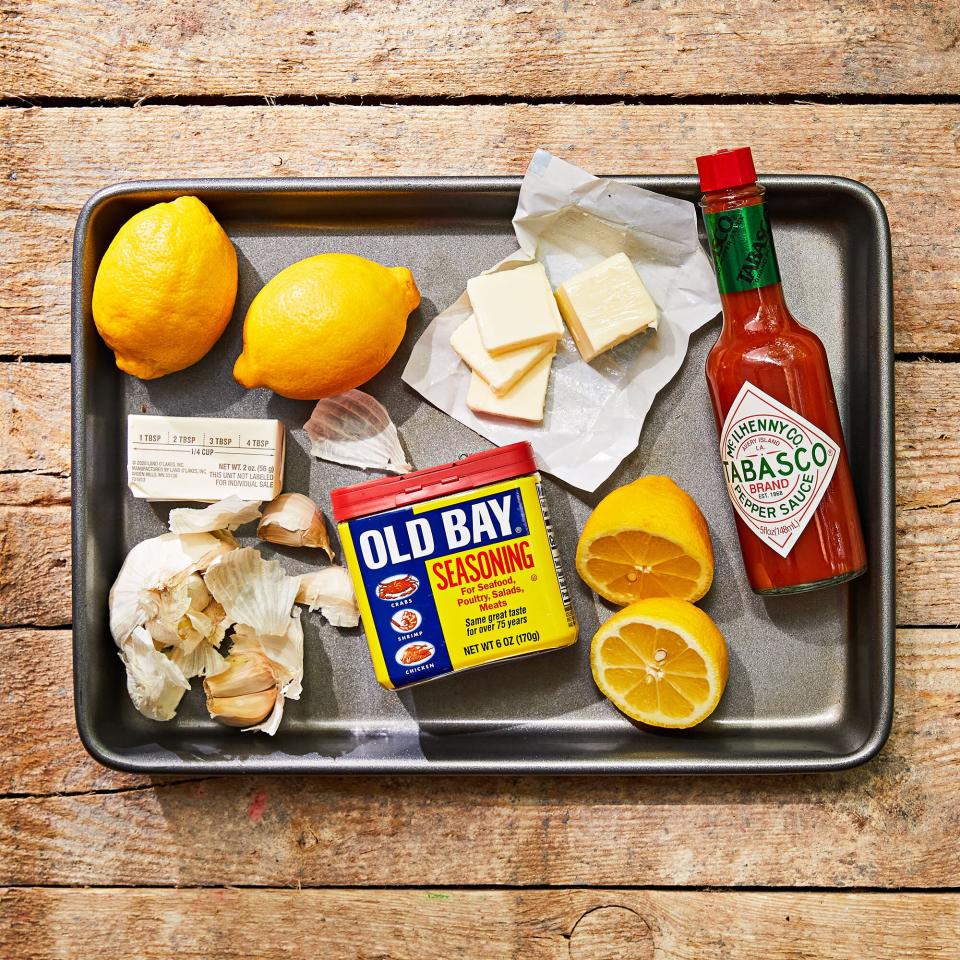
Photo by Christopher Testani / Food Styling by Margaret Monroe Dickey / Prop Styling by Mary Clayton Carl
Infuse butter with lemon zest, Cajun seasoning or Old Bay, garlic, hot sauce, and salt. Cover to keep warm until ready to toss with finished boil.
2. Boil the Cooking Liquor
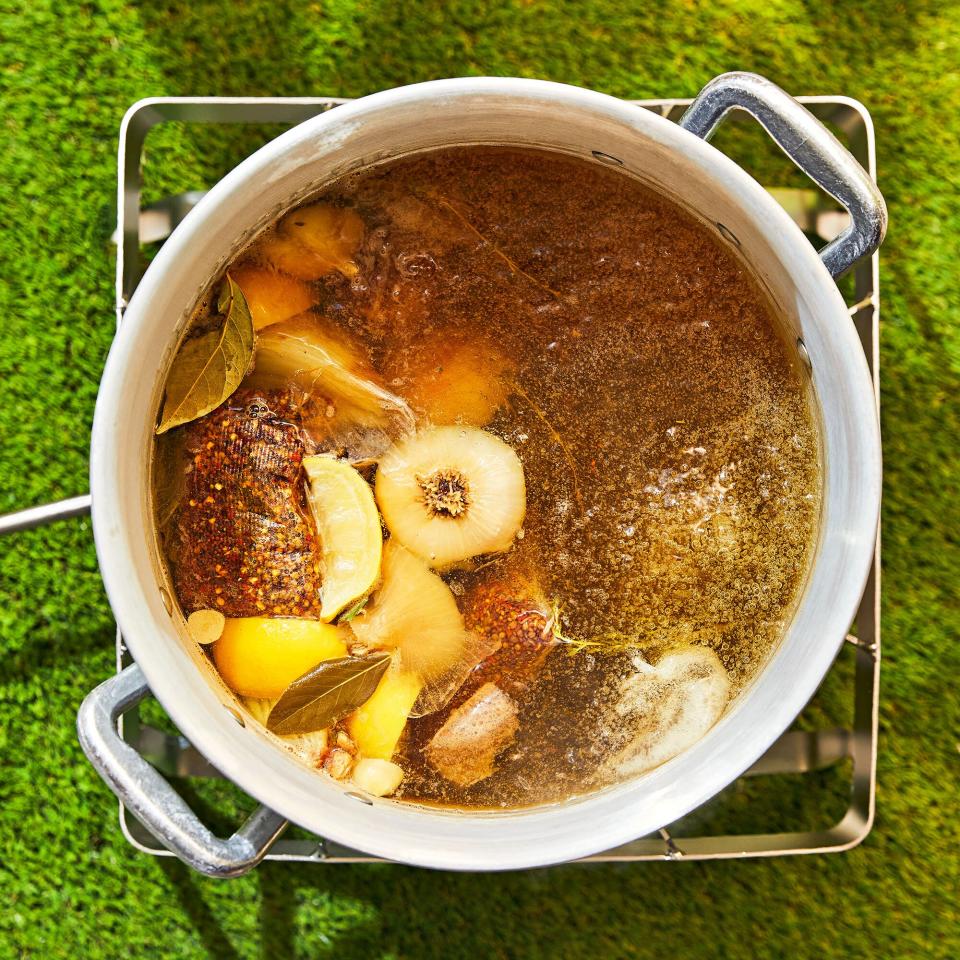
Photo by Christopher Testani / Food Styling by Margaret Monroe Dickey / Prop Styling by Mary Clayton Carl
Bring water, wine, clam juice, onion, garlic heads, quartered lemons, bay leaves, thyme, and salt to a boil. Stir in crab boil packets.
3. Boil Vegetables, Sausage & Shrimp
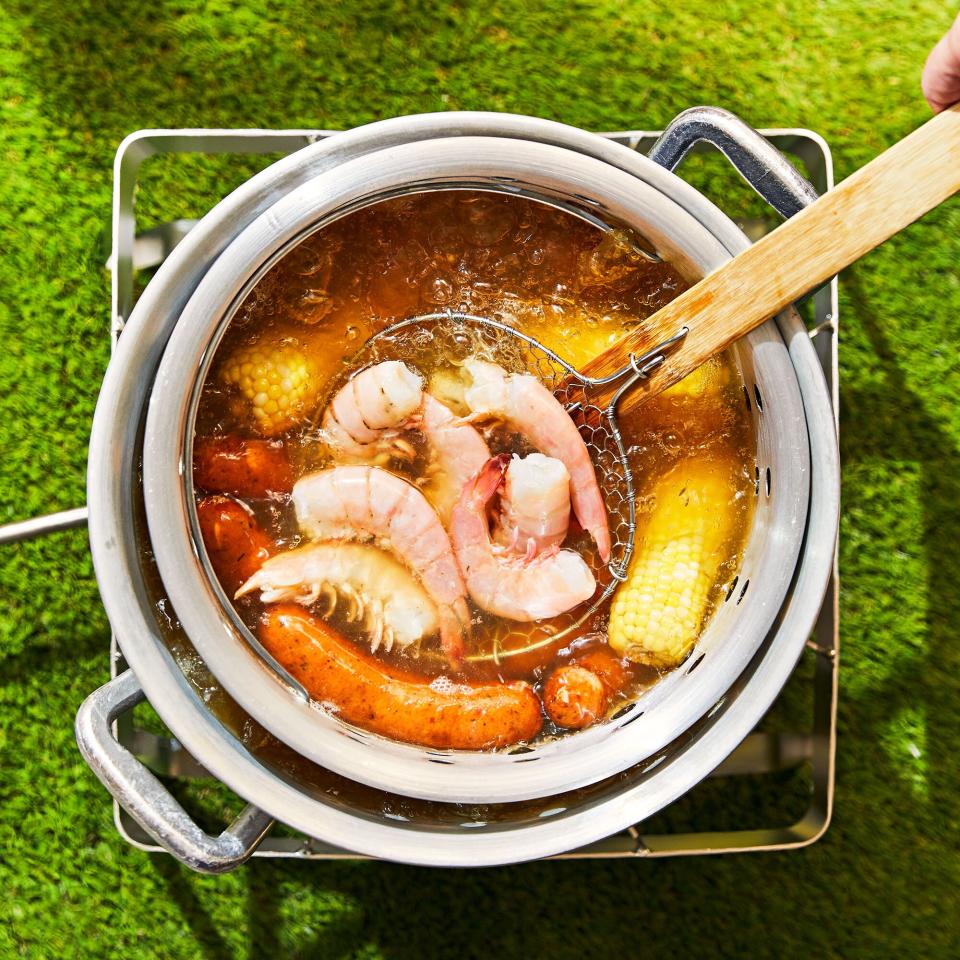
Photo by Christopher Testani / Food Styling by Margaret Monroe Dickey / Prop Styling by Mary Clayton Carl
Place a fitted strainer inside the stockpot with cooking liquor. Cook in stages: first potatoes, then corn and sausage, then shrimp.
4. Lift the Strainer
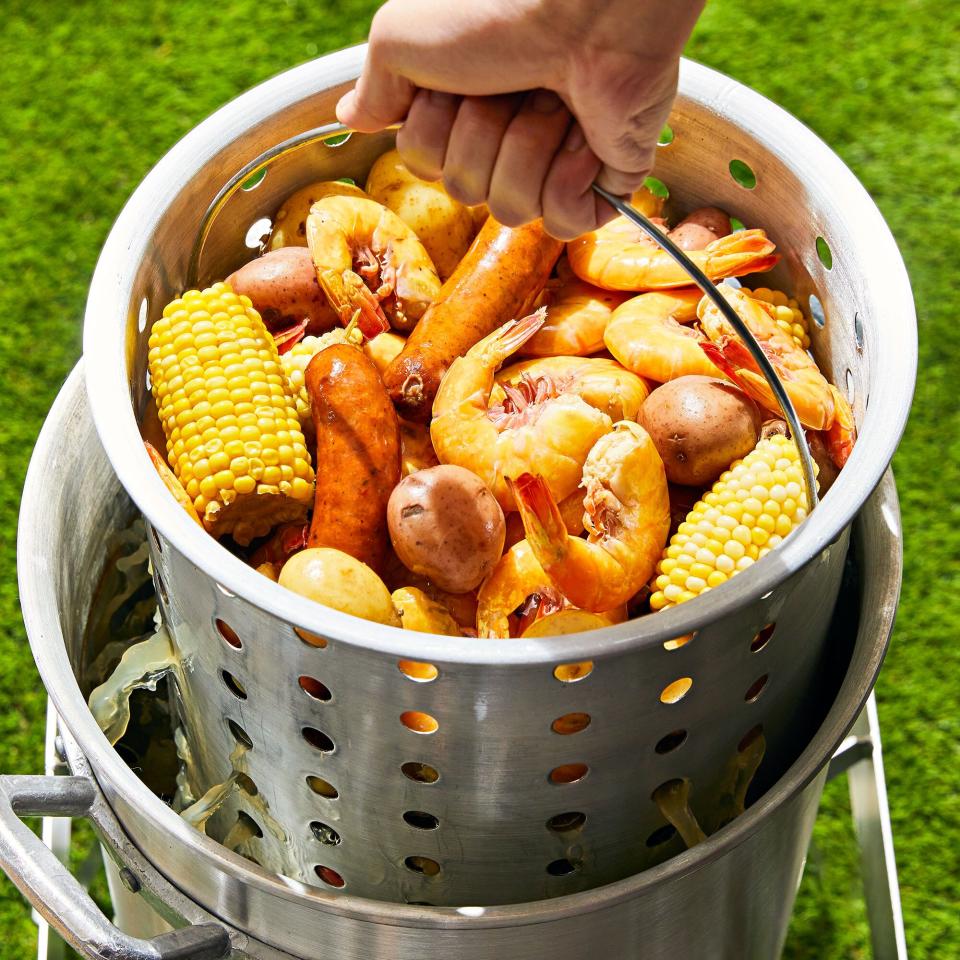
Photo by Christopher Testani / Food Styling by Margaret Monroe Dickey / Prop Styling by Mary Clayton Carl
Carefully lift strainer from pot, letting liquid drain back into pot. Discard the cooking liquor, aromatics, and crab boil packets.
5. Pour Seasoned Butter Over Boil
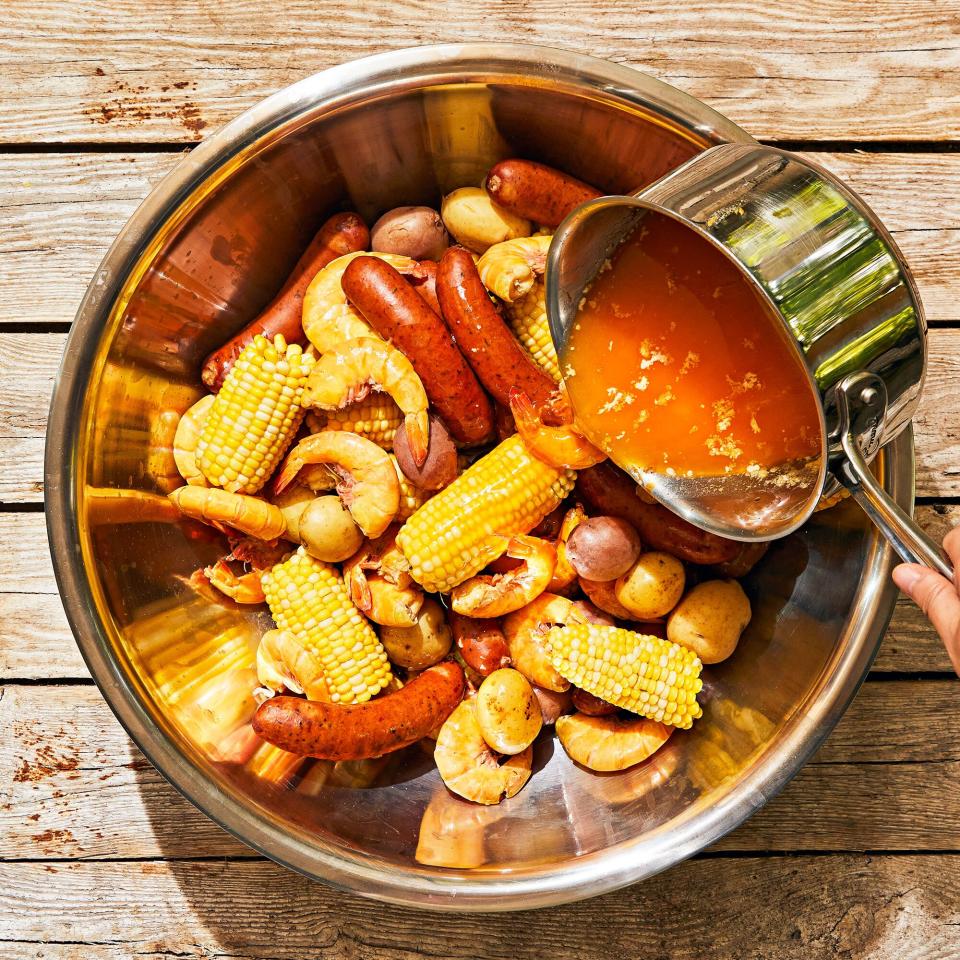
Photo by Christopher Testani / Food Styling by Margaret Monroe Dickey / Prop Styling by Mary Clayton Carl
Transfer shrimp boil (potatoes, corn, sausage, and shrimp) to a large heatproof bowl, and add reserved Cajun seasoning butter.
6. Toss the Boil to Coat

Photo by Christopher Testani / Food Styling by Margaret Monroe Dickey / Prop Styling by Mary Clayton Carl
Toss the butter and shrimp boil to thoroughly coat and season. Arrange buttered shrimp boil on a platter or covered table. Garnish and serve.
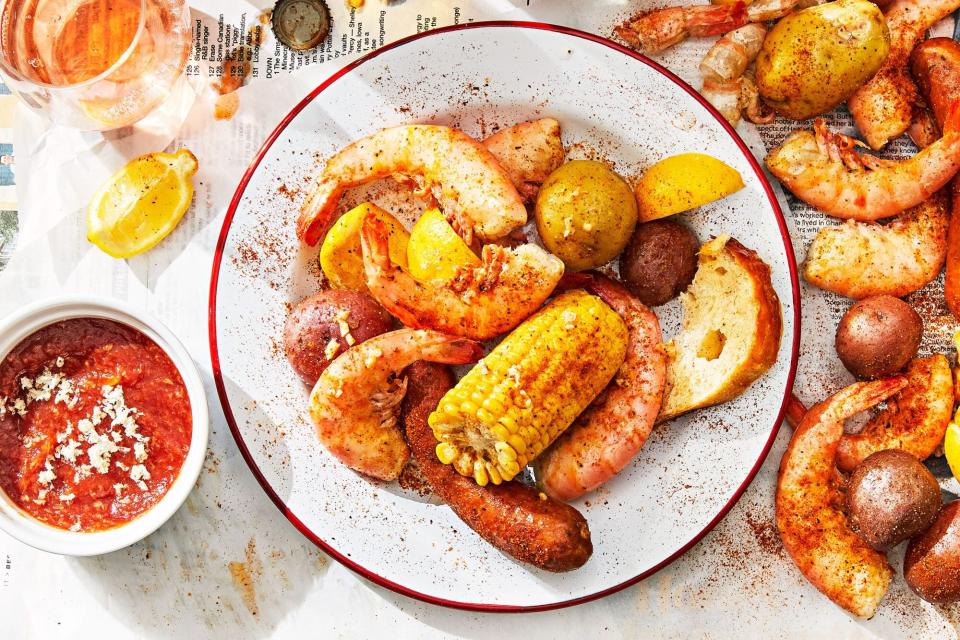
Photo by Christopher Testani / Food Styling by Margaret Monroe Dickey / Prop Styling by Mary Clayton Carl